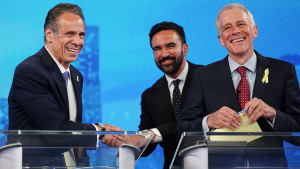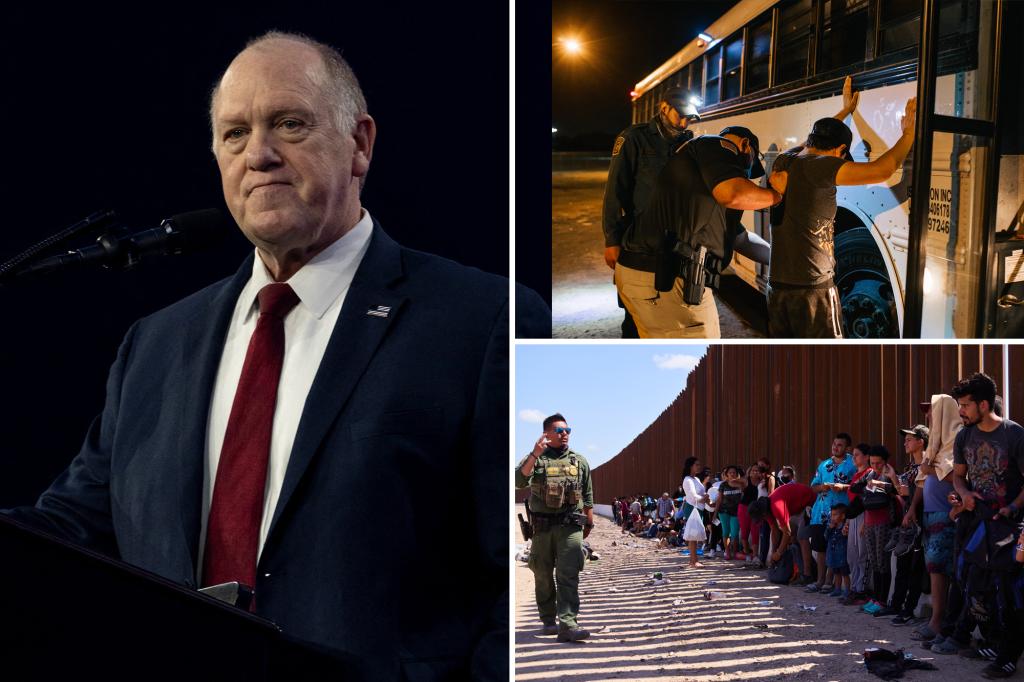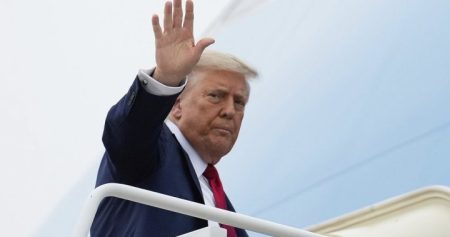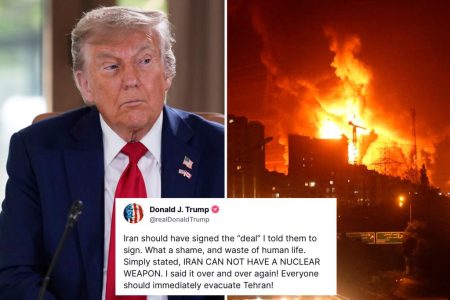Paragraph 1: Setting the Stage for Mass Deportations
Tom Homan, selected by President-elect Donald Trump to spearhead a massive deportation effort, has advocated for weekly White House press briefings to maintain public awareness of the administration’s progress in apprehending and removing undocumented immigrants. Homan, speaking at an event in Naples, Florida, emphasized the need for transparency, suggesting that these briefings should detail the number of arrests, deportations, and detentions. This proposal comes as the Trump administration prepares to implement one of its key campaign promises: a crackdown on illegal immigration. While the Trump transition team has not confirmed whether such briefings will occur, Homan’s statements underscore the emphasis on publicizing the administration’s actions in this area. The scale of the proposed operation has been described as "the largest deportation operation in American history," raising significant questions about logistics, resources, and the potential impact on immigrant communities.
Paragraph 2: Homan’s Vision and Trump’s Mandate
Homan, the former acting director of Immigration and Customs Enforcement (ICE), has vowed to enforce immigration laws rigorously, declaring that "everything changes on January 20th." Trump has outlined a broad mandate for Homan, encompassing not only deportations but also border security across all fronts – southern, northern, maritime, and aviation. This sweeping authority highlights the central role Homan will play in the administration’s immigration agenda. Notably, Homan’s appointment, unlike cabinet positions like ICE director, does not require Senate confirmation, giving him a direct line to the President and potentially greater autonomy. His past experience at ICE positions him as a figure well-versed in the complexities of immigration enforcement, although his approach has also drawn criticism from immigrant rights advocates.
Paragraph 3: Key Priorities and Logistical Challenges
Homan has identified three primary objectives: securing the nation’s borders, initiating the mass deportation process, and locating approximately 300,000 undocumented migrant minors who are unaccounted for. The latter objective raises concerns about the methods that will be employed to locate these children and the potential implications for their families. Homan has acknowledged the logistical hurdles involved in such a large-scale undertaking, particularly the limited detention facilities available. He stressed the need for Congress to act swiftly in allocating the necessary funds to expand detention capacity, arguing that the American public, as reflected in the November election results, has given a clear mandate for stricter immigration enforcement.
Paragraph 4: Deportation Procedures and Resource Requirements
Homan outlined the complexities of the deportation process, explaining that it involves more than simply apprehending and removing individuals. He used the example of a convicted murderer from El Salvador, highlighting the need to detain the individual, obtain travel documents and landing rights, and secure confirmation from El Salvador that they will accept the deportee. This process, he explained, can take days or even weeks, underscoring the need for increased detention capacity. Homan has estimated that the operation will require thousands of additional beds for detainees, placing further strain on already stretched resources.
Paragraph 5: Funding Requests and Congressional Cooperation
Homan has appealed to Congress for significant financial support, estimating that the deportation operation will require at least $86 billion. This substantial request highlights the immense financial commitment needed to implement the administration’s plans. The success of the operation, according to Homan, hinges on Congressional willingness to allocate these funds. He argues that Congress received a “strong message” from the American people in the November elections and should therefore prioritize funding for enhanced immigration enforcement. This assertion frames the issue as a matter of public will, suggesting that Congress has a responsibility to respond to the electorate’s perceived demands.
Paragraph 6: Implications and Potential Consequences
The proposed mass deportation operation raises a number of complex questions. Beyond the logistical and financial challenges, there are significant human rights implications. The focus on deporting undocumented immigrants, including those with families and deep ties to American communities, raises concerns about the potential for family separation and economic disruption. Furthermore, the targeting of undocumented minors raises questions about the government’s responsibility to protect vulnerable children. The operation’s potential impact on US relations with other countries, particularly those in Central and South America, also remains to be seen. The administration’s emphasis on transparency, as articulated by Homan, will be crucial in ensuring accountability and addressing public concerns about the operation’s scope and consequences.










